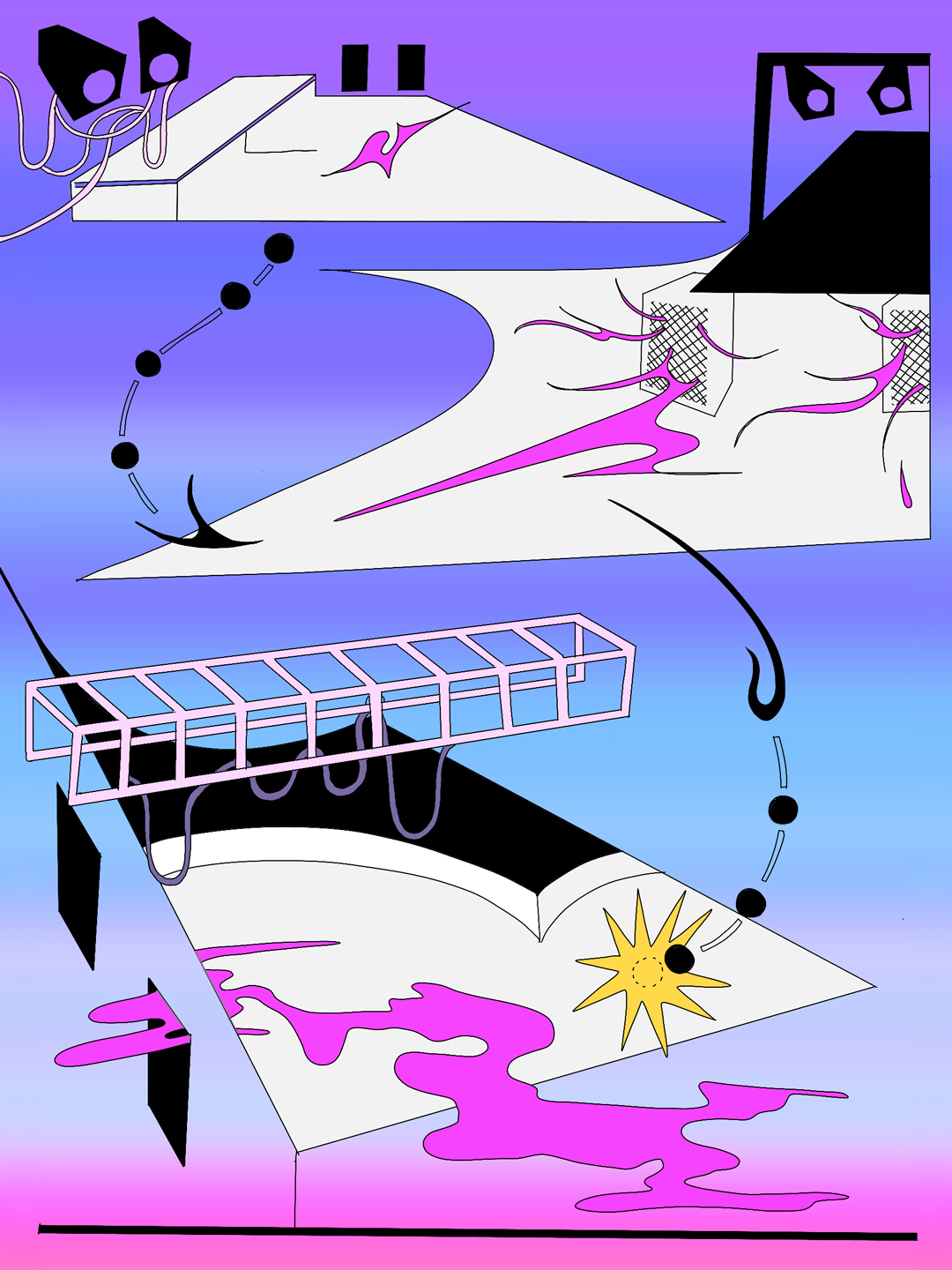Uniform’s Ben Greenberg remembers coming in age in the venue’s old location on Leonard Street.
This story appears in AdHoc 26. To subscribe to our quarterly zine—and receive other AdHoc-related goodies — become a member.
Every month, it seems like yet another sacred New York institution turns into a salad spot. In Smells Like New York, we ask artists to talk about the forgotten treasures and out-the-way haunts that make this city worth living in (or used to). This issue, Uniform guitarist and New York native Ben Greenberg talks about coming of age at the old Knitting Factory on Leonard Street in Manhattan, and the venue’s formative role in his career as a musician. Uniform joins The Body for a collaborative performance on Saturday, November 17 at Market Hotel.
As-told-to Gisela Factora
The old Knitting Factory used to be on Leonard Street in Tribeca, which is different from the original Knitting Factory on Houston Street and very different from the current Knitting Factory in Williamsburg. I grew up going to shows there. It was three floors and they had three venues, and the booking was just so-on point. I got to see a million different kinds of bands that I wouldn’t have been exposed to anywhere else as a kid.
I don’t remember the first time I went there, but I do remember that we would always pore through the Village Voice and look through the listings for shows to go check out, cause we were all young and music was all we cared about. Those show listings were definitely a blessing and a curse, because none of those shows were all-ages. There wasn’t really much in the way of venues for DIY shows or all-ages shows; there weren’t all-ages shows in New York City until I was 17 or 18, besides the ABC [No Rio] matinees. [Venues] did 16-and-up shows, because that was all you could get away with back then.
Everyone at the Knitting Factory was always really nice. We had no idea what we were doing, and they always let us book our own shows and tried to help us out opening for bigger bands and stuff. I learned a lot from that. We met bands that wound up taking us on our first tours. My high school band got to open for the Murder City Devils there once, which was a huge deal for us at the time. I was on a family vacation and I missed the show, so that was the last family vacation I ever went on.
I got to see Cecil Taylor there. I got to see Shat play there, and Jeff Wood had a mohawk made out of dildos. I saw Oops! The Tour there when I was 17, and that was Wolf Eyes, Arab on Radar, Lightning Bolt, and the Locust. That blew my mind. That was my first time I’d been exposed to any music that sounded like any of those bands, and most of those bands didn’t sound like anyone else to begin with.
To see all of that in one show was life-changing, for sure—to be able to see that at the same venue where I could see more confessional hardcore punk bands, or New York free jazz mainstays who were absolutely an equally important part of the downtown music scene. Once you got into going to shows there, you could sort of trust whatever they were booking. And [because] they had three differently sized venues in one building, my band could play our own show with whatever friends’ bands we had connected with, and then go see a show of bands that we thought were really cool in the bigger room, and then eventually get to open shows in the bigger rooms. That was really important. The Knitting Factory really taught me how to be a musician in New York.

